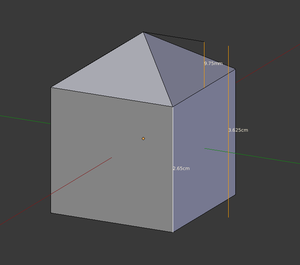Mixed layer height calculations
|
English • العربية • български • català • čeština • Deutsch • Ελληνικά • español • فارسی • français • hrvatski • magyar • italiano • română • 日本語 • 한국어 • lietuvių • Nederlands • norsk • polski • português • русский • Türkçe • українська • 中文(中国大陆) • 中文(台灣) • עברית • azərbaycanca • |
Primary Relevance of Mixed Layer Heights
While a designer/printer may want to change layer heights for a variety of design reasons, including structural needs, smoothing/surface treatment, etc., perhaps the most common need is to optimize print speed (thicker layers allowing for shorter total print time), while using finer layer [heights] for parts of an object requiring finer detail or better handling of shallow slopes.
Example problem:
An object printed in two parts:
- The layer height must be changed at or lower than 27.5mm in the printed object
- The bottom portion is composed of layers with a height of 0.35mm
- The top portion is composed of layers with a height 0.15mm
Additional practical provisions:
- The layer heights are not necessarily fixed requirements. For example:
- A maximum of .35mm might be required for the faster part of the print, but the user may accept down to .30mm.
- The .15mm may be desired, but the user may tolerate a range from, for example, .13-.17mm.
- The number of decimal places in variations in height need to be acceptable by the slicer; for instance, you may not want or be able to specify a layer height more than 3 decimal places (ex: 14.375mm)
= Complications of Calculation
... Work in progress ...
